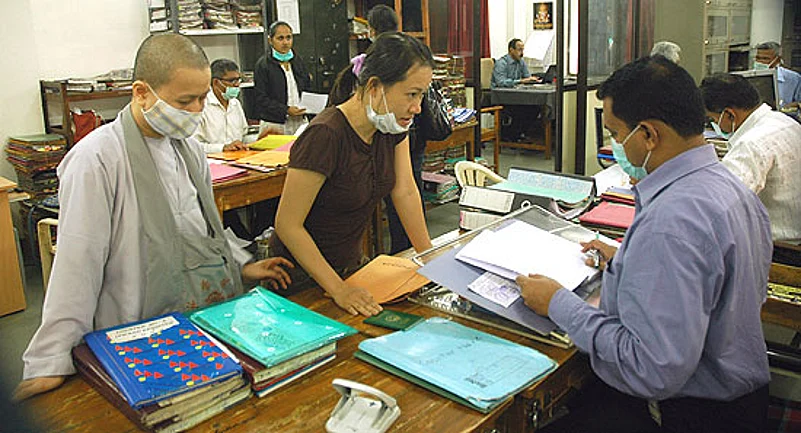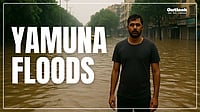Crisis being a perpetual condition in the Indian health sector, maybe it’s time administrators moved out of the usual range of response: swinging between apathy, resignation and frenetic firefighting, with no room for self-evaluation in between. Swine flu seems to have changed that a bit. Across India, even in the epicentres of Mumbai and Pune, the pandemic is ebbing. But health officials believe we can learn from the mistakes we made. The H1N1 nightmare, if not entirely over, has turned out less fearsome than imagined. In its brief run, it exposed the chinks in our armour, almost like a test case. Disseminating information, controlling panic, harnessing infrastructure—on all these fronts, our lack of preparedness was shown up. Here are some morals of the story:
Quell panic. Don’t create it: While the jury is still out on whether the relentless media coverage of the first H1N1-related death in Pune led to panic or simply alerted the masses, officials say the panic was avoidable. And, most importantly, once it had set in, it could have been better addressed. For example, the message that H1N1 flu is not necessarily a killer, that it is almost like the usual seasonal flu, should have been relayed repeatedly on TV and through advertisements in local language newspapers. It took almost a week from the first death for government ads to appear citing Dos and Don’ts, and detailing the protocol to follow for H1N1-suspect patients. “Suddenly, everyone in Mumbai was thinking he or she will be the next H1N1 case; that kind of panic should not have happened,” says Manisha Mhaiskar, additional municipal commissioner (health), Brihanmumbai Municipal Corporation.

Foreigners registering themselves in Pune
Gear up infrastructure: Given the low preparedness, public health facilities, meagre as they are, were not fortified for an emergency situation. Many medics were not handed out the mandatory N95 masks. There were not enough testing kits and test reports were delayed by a day or more till the Union health ministry asked only “critical” cases to be tested. “In a pandemic, disease surveillance is most important. Our system was severely over-burdened,” says Umesh Aigal, chief medical superintendent, Kasturba Hospital. Luckily, designated hospitals rose to the challenge.
Step up preparedness: From the day the first death was reported in Mexico in late April, to early August, when it claimed its first victim in India, there was little or no setting up of defences. It did not enter official discussions or disaster management drills, despite a WHO warning that no country could remain immune. Preparedness should have meant ensuring extra beds, thermal scanners, ventilators for critical cases and empanelling private hospitals for the crisis.
Indeed, what exactly should be the role of India’s burgeoning private healthcare sector in any public health emergency? The ongoing crisis, during which many of these institutions were caught shuffling their feet, has put this question right at the heart of India’s public health discourse. With 28 deaths till August 18, there is still is no clarity on this.
The main reason cited by some of the biggest private hospitals for refusing to take in patients is their inability, or unwillingness, to create isolated wards. Swine flu patients have to be quarantined, but most private hospitals are centrally air-conditioned with no isolation wards.
“This crisis has thrown up a whole range of messy issues,” says Rama Baru, professor at the Centre of Social Medicine and Community Health in JNU, New Delhi. Foremost among them is the lack of any law to ensure private healthcare institutions participate in handling public health emergencies and to regulate their involvement. “Today if the government were to ask private hospitals to contribute in any emergency, they can very well say they are not bound to do so,” she adds. The Epidemic Control Act, 1897, which has been invoked by several states, is way too outdated to do the job effectively. A national influenza pandemic preparedness and response plan exists, calling for creating additional capacity in private hospitals during emergency, but it isn’t backed legally.
A beginning has been made though. There are two bills currently being negotiated—the Clinical Establishment Bill, 2007, and the National Health Bill, 2009—that will enable the government to demand private sector involvement in emergencies. “Treating a patient who arrives at a private hospital is a social and moral imperative. There is no harm in making it a legal imperative too,” says K. Srinath Reddy, president of the Public Health Foundation of India in Delhi.
Then there is the thorny issue of how much a private hospital should charge during an epidemic. What if a poor patient cannot pay? No law addresses these. Speaking for the private sector, Sandeep Budhiraja of Max Healthcare calls for a “public-private partnership” rather than any “enforcement”. A member of the national government swine flu expert committee, he tosses the question back, “It is unfair of the government to restrict swine flu treatment to its establishments when there are skilled doctors in the private sector”. Experts say the government must issue guidelines for private players to help it deal with public health emergencies, maybe with an autonomous body overseeing their enforcement.
But besides the precise mode of involving private hospitals, there are other issues thrown up by the pandemic:
The need for the global protocol: The protocol to tackle epidemics calls for designating a command-control centre—usually the best public hospital—and declaring other hospitals as ancillaries, publicising access and information and mandating private hospitals and testing facilities ahead of the first case. Also crucial are linking all facilities with a central information system to facilitate easy referral of critical patients, continuous dialogue between policy-makers and medical experts, and finally, having a visible authority in place. Whenever Union health minister Ghulam Nabi Azad spoke, he raised panic levels.
Gear up to connect internationally: The WHO recently released a document titled ‘Influenza Preparedness and Lessons Learned’. Indian authorities could have picked up their cues from there. Shutting down cities or public places in cities, transparency in declaring cases and exhibiting “political will” to match medical inputs were some of the options exercised there. Mexico was criticised for its draconian measures that cost its economy $3.5 billion, but who director Margaret Chan said: “It also gave the world a model of rapid and transparent reporting, aggressive control measures, and generous sharing of data and samples”. Was our health ministry out of the loop? Or did it just wait and watch idly till it could no longer help it?
By Smruti Koppikar in Mumbai and Debarshi Dasgupta in New Delhi


























